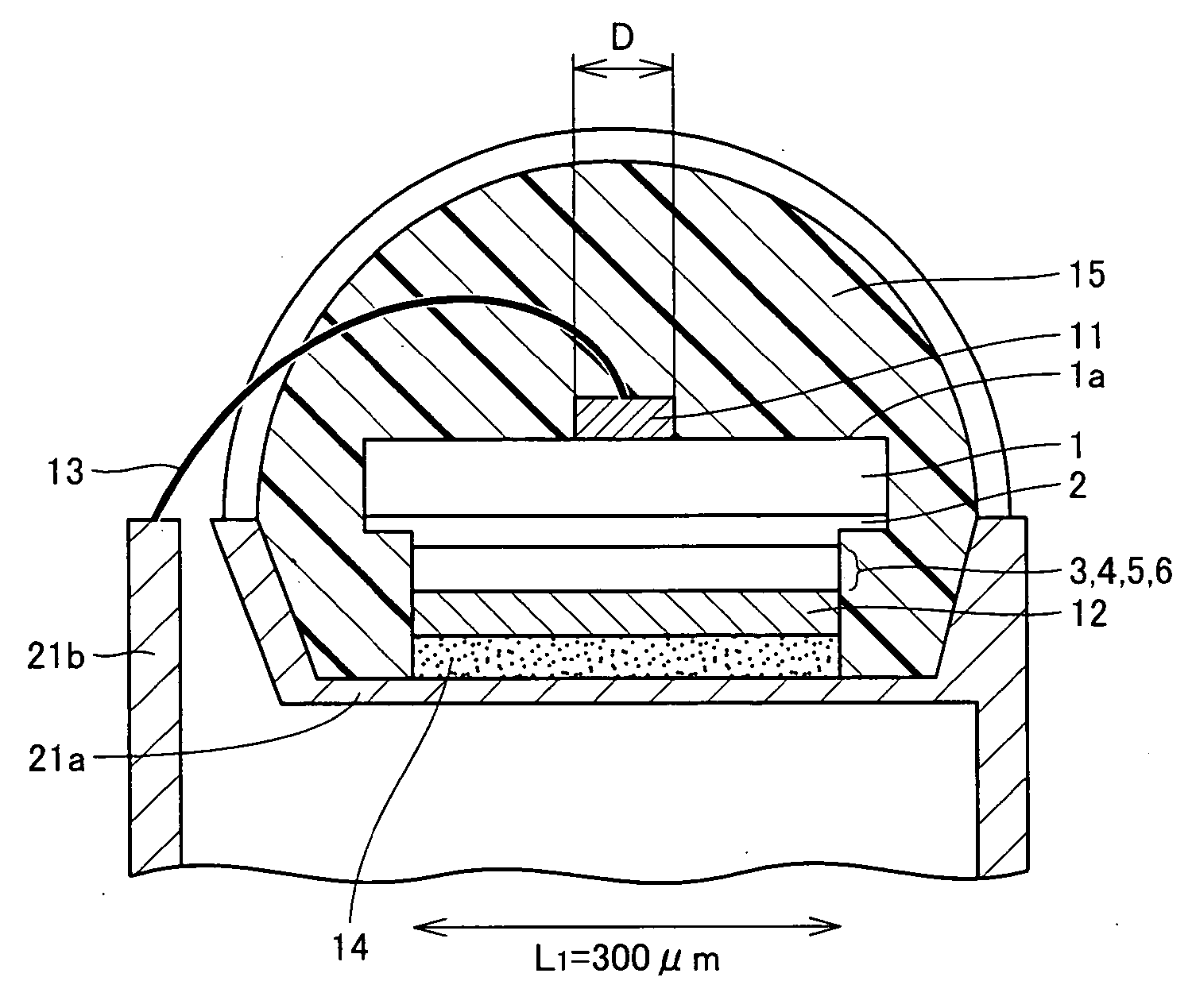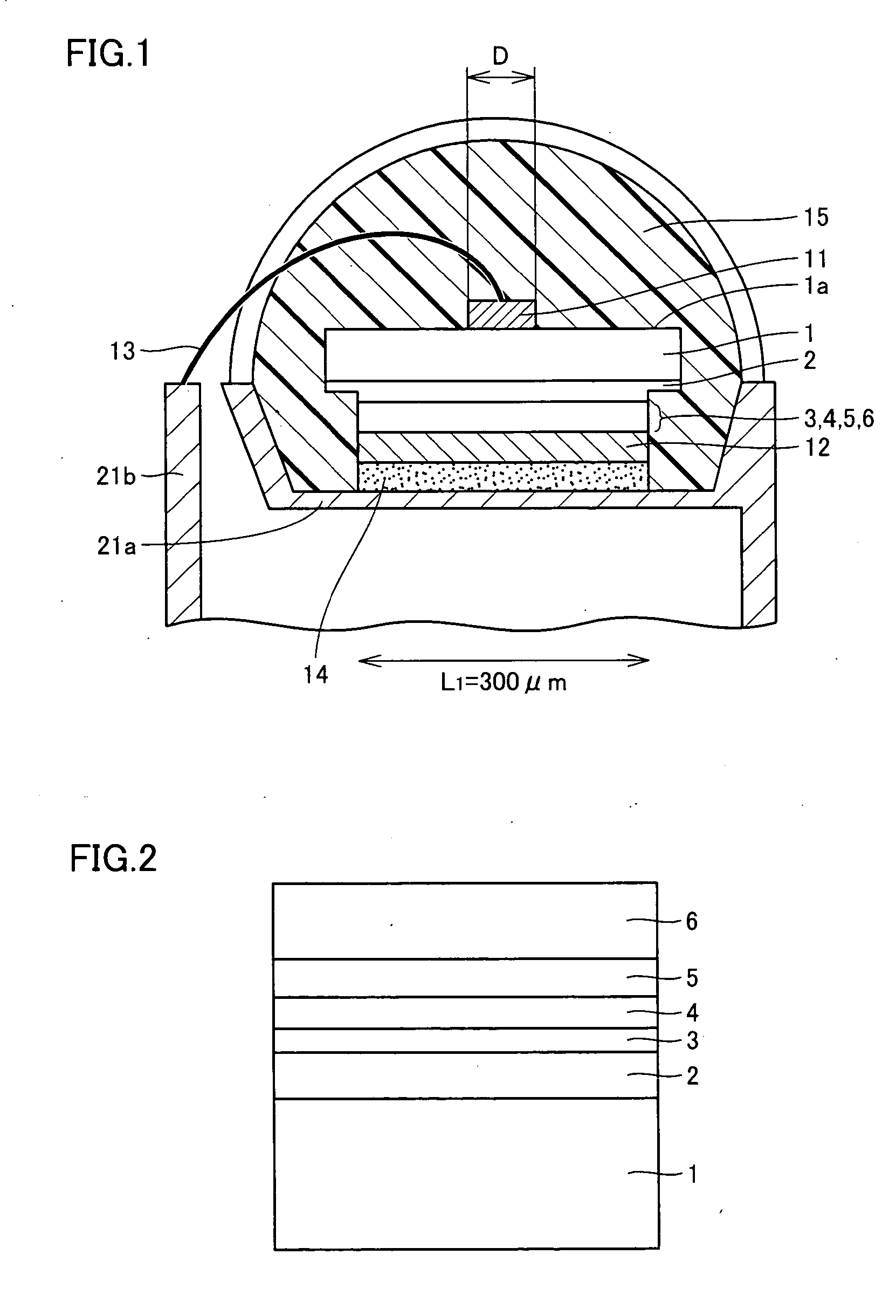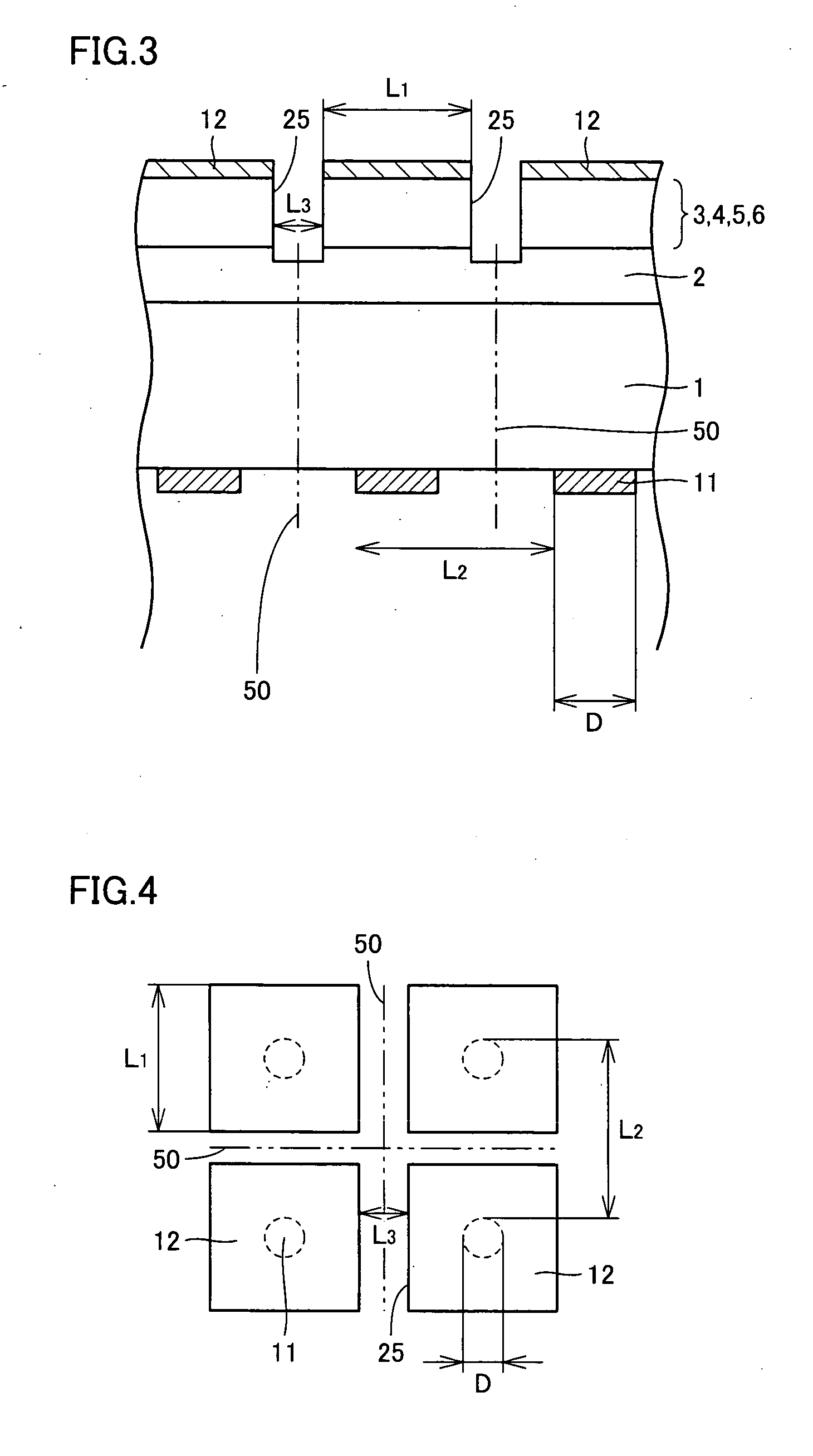Light emitting apparatus
a technology of light-emitting apparatus and light-emitting gan, which is applied in the direction of electrical apparatus, basic electric elements, and semiconductor devices, can solve the problems of unavoidably increasing the fabrication cast, complicated construction, and significant complexity of the gan-based led construction, and achieves simple construction, high light-emitting efficiency, and easy fabrication.
- Summary
- Abstract
- Description
- Claims
- Application Information
AI Technical Summary
Benefits of technology
Problems solved by technology
Method used
Image
Examples
example c
INVENTIVE EXAMPLE C
[0127] (c1) to (c5) The same processes as the corresponding processes of Inventive Example A were performed, but a larger GaN substrate was employed.
[0128] (c6) On the second main surface at the back side of the GaN substrate, n-electrodes with a diameter of 100 μm are formed with a pitch of 3.1 mm by a photolithography technique, vapor deposition and lift-off method. As the n electrodes, a laminate construction consisting, from the bottom side, of (a Ti layer 20 nm / an Al layer 100 nm / a Ti layer 20 nm / an Au layer 200 nm) was formed in contact with the back side of the above GaN substrate. This was heated in an inert atmosphere to reduce the contact resistance to below 1E-5 Ω·cm2.
[0129] (c7) The same process as the corresponding process of Inventive Example A was performed.
[0130] (c8) Subsequently, the construction was scribed to make it to be desired shapes and the chipped constructions were made to be light emitting devices. The chipped light emitting devices ...
example f
INVENTIVE EXAMPLE F
[0153] (f1) to (f5) The same processes as the corresponding processes of Inventive Example A were performed.
[0154] (f6) Subsequently, as illustrated in FIG. 17, the construction was scribed to be desired shapes and the chip-shaped constructions formed light emitting devices. The resultant light emitting devices had a size of 8 mm square.
[0155] (f7) to (f11) The same processes as the corresponding processes of Inventive Example A were performed.
[0156] (f12) In addition to the above (f11), a white-emitting lamp was fabricated by mounting a fluorescence material on the n-electrode side of the light emitting device which had been mounted on the mount of the lead frame in (f10) and then sealing the light emitting device with an epoxy resin. For this, a fluorescence material which generated 180 lm for 1 watt of light output with 450 nm was employed.
COMPARATIVE EXAMPLE G
[0157] (g1) An n-type GaN off-substrate angled by 0.5° with respect to the c-plane was employed. ...
example i
INVENTIVE EXAMPLE I
[0181] (i1) An n-type GaN off-substrate angled by 0.5° with respect to the c-plane was employed. This GaN substrate had a resistivity of 0.01 Ω·cm and a dislocation density of 1E7 / cm2. This GaN substrate had a thickness of 100 μm.
[0182] (i2) The following layers were formed in order on the first main surface of the GaN substrate by MOCVD. Namely, a laminate construction (a GaN buffer layer / a Si-doped n-type GaN layer / a Si-doped n-type Al0.2Ga0.8N layer being a clad layer / a MQW layer consisting of three layers each being a two-layers construction comprised of a GaN layer and an In0.05Ga0.95N layer / a Mg-doped p-type Al0.2Ga0.8N layer being a clad layer / a Mg-doped p-type GaN layer) was formed.
[0183] (i3) The light emission wavelength was 380 nm. The internal quantum efficiency was 50%, which was calculated for convenience by comparing the PL intensity at a low temperature of 4.2 K and the PL intensity at a room temperature of 298 K.
[0184] (i4) to (i5) The same pro...
PUM
 Login to View More
Login to View More Abstract
Description
Claims
Application Information
 Login to View More
Login to View More - R&D
- Intellectual Property
- Life Sciences
- Materials
- Tech Scout
- Unparalleled Data Quality
- Higher Quality Content
- 60% Fewer Hallucinations
Browse by: Latest US Patents, China's latest patents, Technical Efficacy Thesaurus, Application Domain, Technology Topic, Popular Technical Reports.
© 2025 PatSnap. All rights reserved.Legal|Privacy policy|Modern Slavery Act Transparency Statement|Sitemap|About US| Contact US: help@patsnap.com



